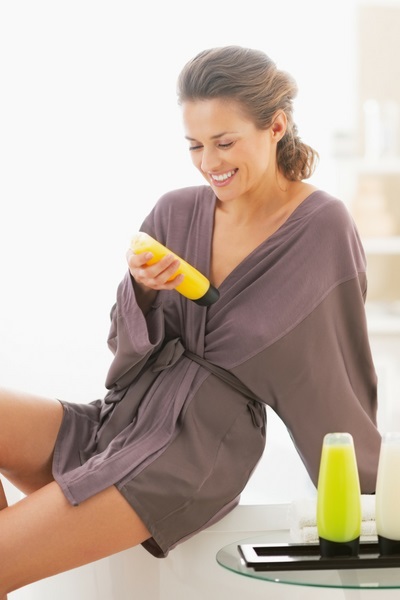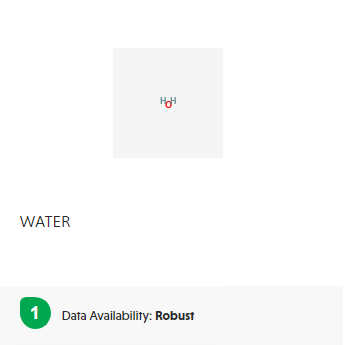(4 minute read)
Are you concerned about possible harmful ingredients in your beauty products? Have you ever thought about what’s in your facial moisturiser or your favourite foundation?
Does skin absorb products?
Debate has raged for some time about whether the ingredients in products used on our skin can be absorbed into the skin and potentially into our blood stream. Some people argue that our skin is made up of different layers with different compositions and that this makes penetration beyond the very top layers unlikely. Others argue that it depends on the size of the molecules in the product formulations themselves - the smaller the molecules, the deeper the product is absorbed. Here’s my personal opinion:
- There have been studies that prove ingredients applied to our bodies can end up in our blood stream. For example, this study from 2015 revealed that Triphenyl Phosphate in nail polish showed up in the urine of women who had applied the nail polish to their nails some 10-14 hours after application. Triphenyl Phosphate is associated with endocrine (hormone) disruption and neurotoxicity.
- Claiming that an ingredient does not penetrate the skin or enter the blood stream does not necessarily justify the use of that ingredient in personal care or cosmetic products if there are concerns about its safety. Sunscreen manufacturers that use chemical UV absorbers in their formulas claim that those chemicals do not penetrate into the deeper layers of the skin but research results from June 2017 have shown that one such ingredient – Avobenzone – breaks down into toxic compounds when exposed to sun and water: precisely the conditions when most of us use sunscreen, like spending time outdoors on a sunny day or going for a swim at the beach. So, even if Avobenzone is not absorbed into the skin (and that’s debatable), why would you want to put something on your skin that transforms into potentially dangerous compounds?
How do you check ingredients of products used on skin?
So, how can you check the safety of your favourite products? Well, first of all, don’t rely on advertising. Lack of regulation allows manufacturers to use words like ‘natural’ and ‘organic’ without justification.
The best way to make certain the ingredients in a product really are more ‘natural’ is to become a label checker. Yes, it takes a little effort but you’re probably already used to doing it for food labels, right? Well, it should be no different for cosmetics and toiletries and practice makes perfect, so become an ingredient checker today!
Of course, when it comes to ‘organic’ products, your best insurance is to choose ‘certified organic’ products. These products must meet minimum organic content to be able to display organic certification logos on their packaging.

(image credit: Canva)
How do you read product labels?
So, back to reading labels. I know what you’re thinking. Read the label? Really? With all those long, complcated words, how will you know what's safe and what’s potentially harmful? Like anything, understanding ingredients in cosmetics and personal care products is something you do get better at the more you do it. Grab that bottle of moisturiser and check out its ingredients online.
A good place to start is the Environmental Working Group’s Skin Deep Cosmetics Safety Database. You can enter the name of an ingredient, product or brand, hit the search button and get a safety rating between 1 and 10 (1 being the safest and 10 the least safe). Note: while many Aussie product names and brands are not rated on the system – because it is skewed more towards American brands – it is still excellent for searching ingredients. Bear in mind, too, that the scoring system is not ‘black and white’ and there are several factors that can affect an ingredient’s safety rating, including how much research data exists in relation that ingredient.
Let's look at an ingredient example - Water

(Image source: ewg.org)
In the image above, taken from the EWG Skin Deep website, you can see the results for a search of “water”. Water has been given a score of 1 which is a very safe rating. Next to the score, you will see that Data Availability is: Robust. This means there’s been a lot of research into water and its effects and we know a lot about it. Because the Data Availability is Robust, you can be more confident in the safety rating of 1 for Water. When you click on the ingredient, in this case water, you can find out more information about it such as:
- synonyms - other names by which the ingredient is known
- how the product scores for common concerns, like cancer, allergies and immunotoxicity, developmental and reproductive toxicity and use restrictions
You can also find which products typically contain the ingredient.
Now, let’s look at a less researched ingredient - Phenyl Trimethicone
![]()
(Image source: ewg.org)
Phenyl Trimethicone is a silicon-based polymer. You’ll notice from the image above that, like Water, Phenyl Trimethicone has a safety score of 1. However, in this case, the available data is: Limited. So you need to appreciate that when the EWG gives this ingredient a rating of 1, that score is based on the limited research data available for this particular ingredient at this point in time. This means the level of confidence we would place in the score of 1 might be less than it would be for an ingredient with robust data availability, like water.
While the EWG rating system may not be perfect, it can be a really useful source of information and will give you a general idea about an ingredient’s safety. I think it’s certainly a great place to start if you want to learn more about the ingredients in your products and their general safety. You can also use it to find which brands and products have good safety ratings.
Note: Naturally Safe Cosmetics are not health professionals. Any information or advice in this guide is of a general nature only and not intended to diagnose, treat, cure or prevent any disease. For medical advice regarding the impact of ingredients in your own personal circumstances, we recommend you contact your GP or other healthcare professional.

